Sara Cedar Miller, New York City (2020)
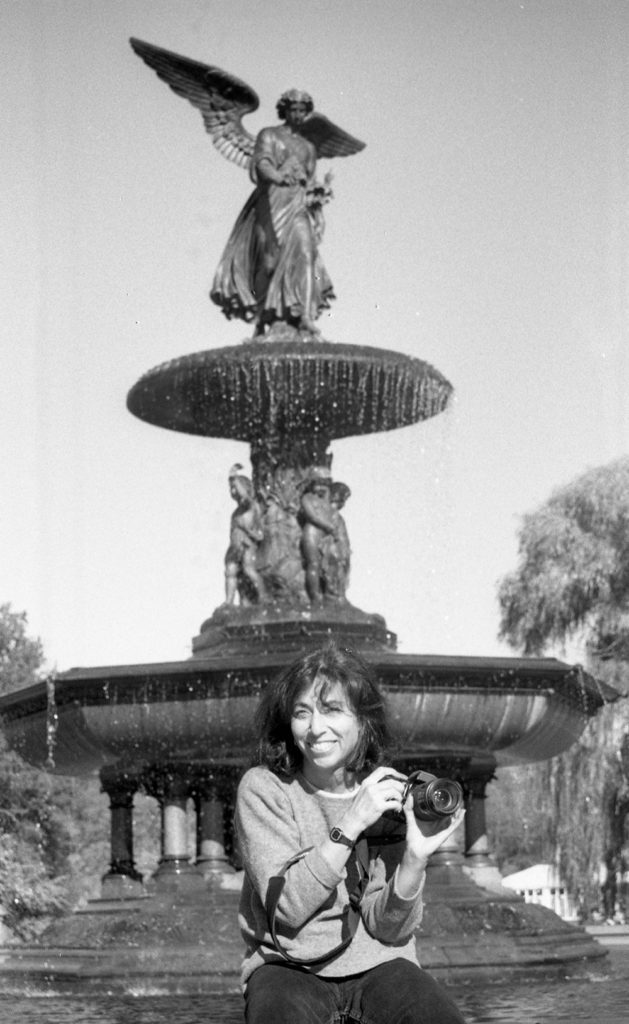
For thirty-six years, Sara Cedar Miller has taken photographs of one of the great works of American art. Now the Central Park Conservancy’s historian emerita, she joined its staff as a photographer in 1984, when the park was at its nadir, and her images of the rampant destruction and neglect became a call to arms for the park’s restoration. Over time, as improvements were made, she was able to document its transformation back to the masterpiece that so many millions of visitors enjoy today. With her deep knowledge of art history as well as her keen photographic eye, Miller has been able to reveal the brilliance of the mid-nineteenth-century design created by Frederick Law Olmsted and Calvert Vaux, and to encourage legions of park visitors to support the work of the Conservancy. In her photographs and her scholarship, Miller has created a vital historical record and a vivid portrait of one of the most complex, fragile, and most deeply loved places in America.
In this interview with Jonathan D. Lippincott, Sara talks about her long history of photographing and studying Central Park.
JDL: Did you study photography or history in school?
SCM: Yes to both. I have an MA in art history from Hunter, where I focused on Michelangelo and studied with Leo Steinberg, and an MFA in photography from Pratt. My former husband, who owned a camera, encouraged me to start taking pictures because I was always saying, “Look at this, look at that!” On vacation in Paris, I took my first photograph that wasn’t of a painting or sculpture of a couple walking on the Champs Elysées, and the minute I clicked the shutter, I said, “I think I love this!” I set up a darkroom in the kitchen of our one-bedroom apartment and developed a small business photographing my artist-friends’ work for their portfolios to shop around to galleries.
How did you start working in Central Park?
I heard about a job at the Conservancy from a grad school friend. Betsy [Elizabeth Barlow] Rogers had made two calls looking for a photographer, one to Pratt and one to Cooper Union. My friend was working at Cooper Union, and when she got the call, she immediately called me. I later found out that other applicants showed up with portfolios as if they were trying to get a show at a gallery. Instead, I brought all kinds of pictures—landscapes in Europe, weddings and parties, experimental work, portraits, still lifes; color, black and white; slides, prints—everything. The Conservancy needed someone who could do every kind of photography, so I was the lucky one who got the job.
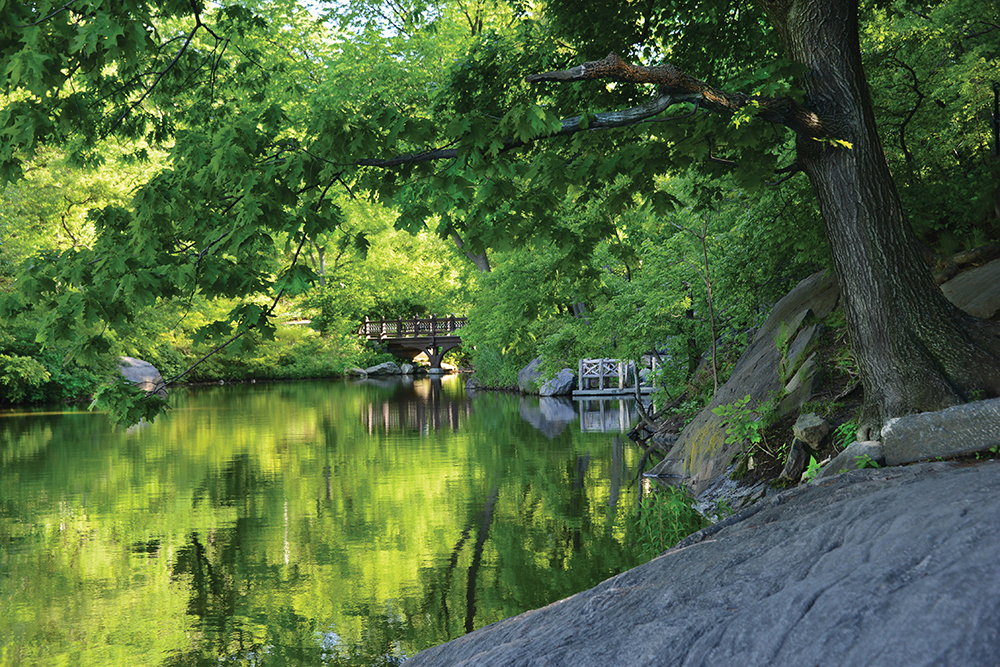
What sort of photographs were you were taking in the beginning?
In 1984 the master plan was about to be published, and the Conservancy needed to document the restoration work underway at that time and all the conditions that had to be addressed going forward. I spent time learning how to see the park with my “teachers” Judith Heintz and Marianne Cramer, the Conservancy’s landscape architects who worked on the master plan. I also took PR photos at events for donors, of the staff at work, and of park visitors. I’d be out in the mud all day and then dressed up for parties at night. The opportunity allowed me to be a fly on the wall of New York City, but it was quite a wardrobe challenge!
How did your role at the Conservancy change over time?
After five years, Betsy appointed me to be the historian of Central Park, and I began to do research for public relations and in-house staff and to answer questions from the press, the public, scholars, and students. The park is used by millions of people in a million different ways, and they all want photos or information on some aspect of it.
History and photography inform each other, so it was beneficial for me to be doing both. My art history training taught me how to interpret elements of the park’s artwork, such as the iconography behind the carvings at Bethesda Terrace or many of the sculptures, in terms of the culture that created it. Remarkably, no art historian had ever studied Central Park before. Many scholars from different academic fields acknowledged the park as a work of art, but they had failed to pay attention to the iconography of many park features or to place it in an art historical context. I had been trained to look at the times, the culture, and the influences of an artist—in this case, three artists: Frederick Law Olmsted, Calvert Vaux, and Jacob Wrey Mould.
Tell me a bit about the master plan and your role in that.
The master plan was the bible of the restoration, with a description of each section of the park and the problems in it and how to fix them. I took photographs of the current park and did a bit of photo research for the document. The draft was completed in 1984, and MIT Press published the final edition [Rebuilding Central Park: A Management and Restoration Plan] in 1987. When Central Park was built, it inspired other U.S. cities to build urban parks; when Central Park was restored, it inspired other cities to restore those same nineteenth-century parks. Central Park has been a major influence in American culture and landscape. It’s very democratic, to have a space for all people: this is the Constitution in grass and trees. Central Park is a social democratic experiment that succeeded. This idea first moved out into the nation and then into the world.
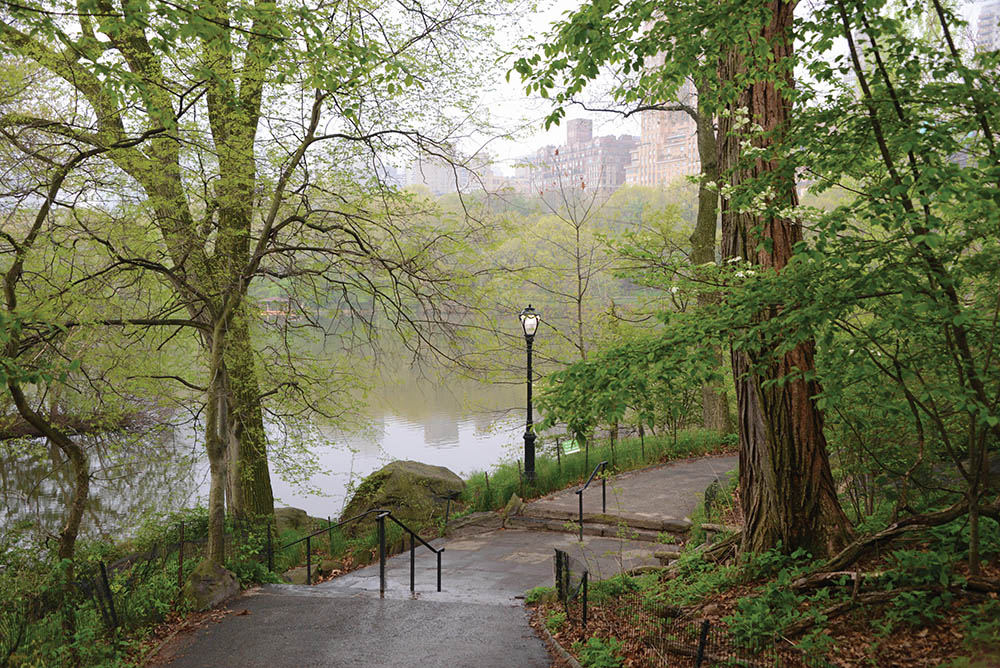
How did you first approach the park? What was your initial relationship with it?
I was immediately drawn to the park as a work of art, a series of composed scenes. I looked at old photographs to learn how to see the park, how Olmsted and Vaux designed it. They were painting scenes with trees and water and rocks, and I respond to them, photograph them, show them to others. My absolute luck and joy.
How do you go about exploring the park and finding the places you want to photograph?
It tends to be very seasonal. The area around the Pool on the Upper West Side is great for fall color. In the spring, the allées of Yoshino and Kwanzan cherry trees around the Reservoir. My favorite time to photograph is after a snowstorm, when the wet snow clings to all the branches and everything, and the sun comes out and there’s a blue sky. The Mall looks like a Gothic cathedral. The park is magical in the snow.
What are some of the challenges of photographing in the park?
The biggest challenge is the fences. We need to have them, of course, but they tend to disfigure a scene and distract from the idealized park we see in our minds. Today’s skyline is a growing visual problem. We’ve gotten used to a wall of buildings around the park, but they were all the same height, more or less. Now these tall splinters stick up so much higher. If I have the complete skyline in a photo, it’s too much sky and not enough landscape. The proportion of sky to landscape has changed completely. I have to crop photos at the first level of buildings and cut off the tops of the new ones in order to focus on the park.
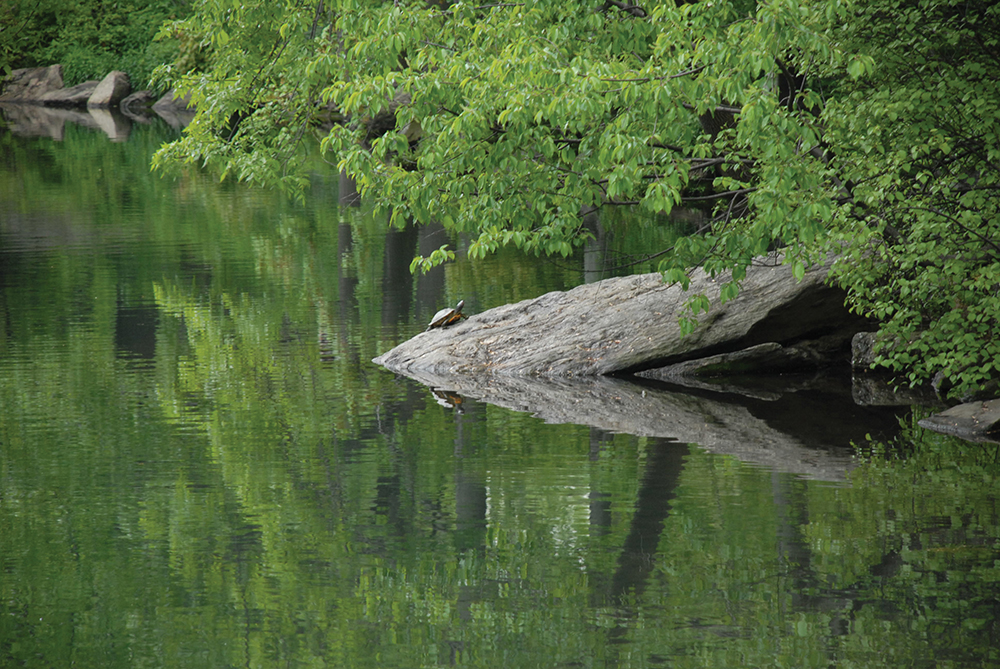
Do you use historical photos of the park in your work?
Yes, I have spent a great deal of time looking at historical photographs to understand what Olmsted and Vaux were aiming for in their landscapes. Old photos help me to understand how the topography has changed over time, and the ways that views have changed. I have also researched historical photographs for designers so they can restore a landscape, a bench, or a bridge. Occasionally, we use historical photos for vegetation, but plant material and conditions have changed over time, and we have a better understanding of how to use contemporary trees and shrubs. Olmsted planted a lot of invasive plants we would never use, for example.
Have all your books been about different aspects of Central Park?
Yes. It took ten years to find a publisher for my first book, Central Park, An American Masterpiece, because all the sales and marketing people thought only those who live on the perimeter would buy a book about Central Park. We proved them wrong. That book discussed the park as a work of art. The Conservancy’s most recent book, Seeing Central Park, Updated and Expanded, is a short introduction for a visitor or an armchair traveler. My next book, Before Central Park, will be the history of the pre-park.
Tell me about the history before Central Park.
I had the privilege to spend four days in the park with our archaeologist, Richard Hunter, in 1990, and I began to see the landscape as a remnant of what was. When I lead tours, I’m often asked, “What was here before the park?” No one asks this of Times Square, but Central Park just begs the question! Nothing much has been written about before. The Park and the People by Roy Rosenzweig and Elizabeth Blackmar treats the decades leading up to the creation of the park, and the 1997 exhibit Before Central Park: The Life and Death of Seneca Village at the New-York Historical Society also focused on a short span of time, whereas this new book will cover more than two centuries of social history as well as the millennia of geologic history. It’s been a thrill to do this research and work with original documents. The 843-acre pre-park is a microcosm of New York history, and when you add the history of Central Park after the mid-1850s, it encompasses almost every aspect of American urban history.
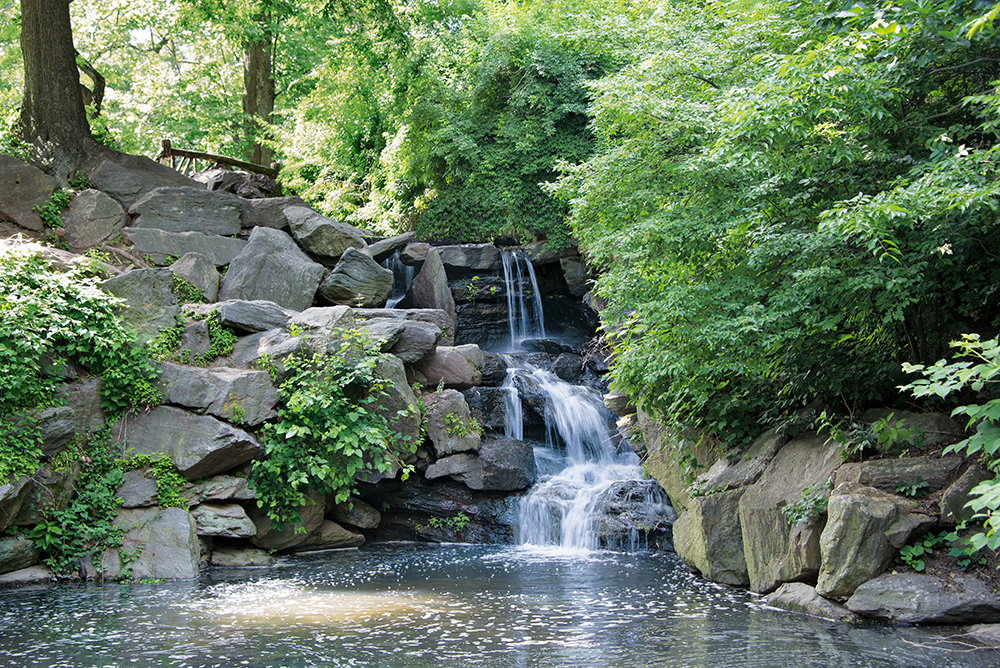
What role do you see photography playing in the preservation of the park?
It is so important to document the work of the Conservancy visually. No one today would ever believe the park was once in such devastating condition, and those images alerted New Yorkers to how much the park needed to be rescued.The photos, more than anything else, are the reminders that the park is beautiful because of the people whose hard work and dedication make it so. It isn’t just Mother Nature, but the Central Park Conservancy staff who are out there in every kind of weather, every day and evening, to ensure that the park looks as beautiful and is as welcoming in real life as it is in an image. New Yorkers also need to be reminded of the park’s fragility and that it requires constant care, good management, and expertise, and the photos help to inspire New Yorkers to support that vital work.
There are two kinds of photography that are required for the Conservancy’s work: documentary and artistic. A document records what was in front of the camera lens, to remember how the park looked at a certain time, how we did a particular kind of work, or who was at an event. The artistic is involved with the emotional memory of the park as an idealized space. The Conservancy works hard (alongside Olmsted and Vaux) to create a perfect landscape, and that is what the mind sees while visiting, and long afterward. This work of art has no fences, no erosion, no crooked lampposts, no signs, no dead flowers, no trash cans. When we are in the park, our brains ignore those mundane aspects in the landscape, but the camera sees all and in sharp detail. Photoshop does enable us to change a photograph from a document into a work of art, but mood and emotion—the goal of an artwork—must also come from the timelessness and magic that are captured by photography’s essential tools: light, tone, color, blur, form, line, texture, pattern. These elements draw people into a good photograph, and they are the same qualities that draw people into the beautiful landscapes of Central Park. I have a sign in my office of a quote by the landscape architect Diana Balmori: “A landscape, like a moment, never happens twice.” That is why Central Park is perpetually a photographer’s dream come true.
—Jonathan D. Lippincott